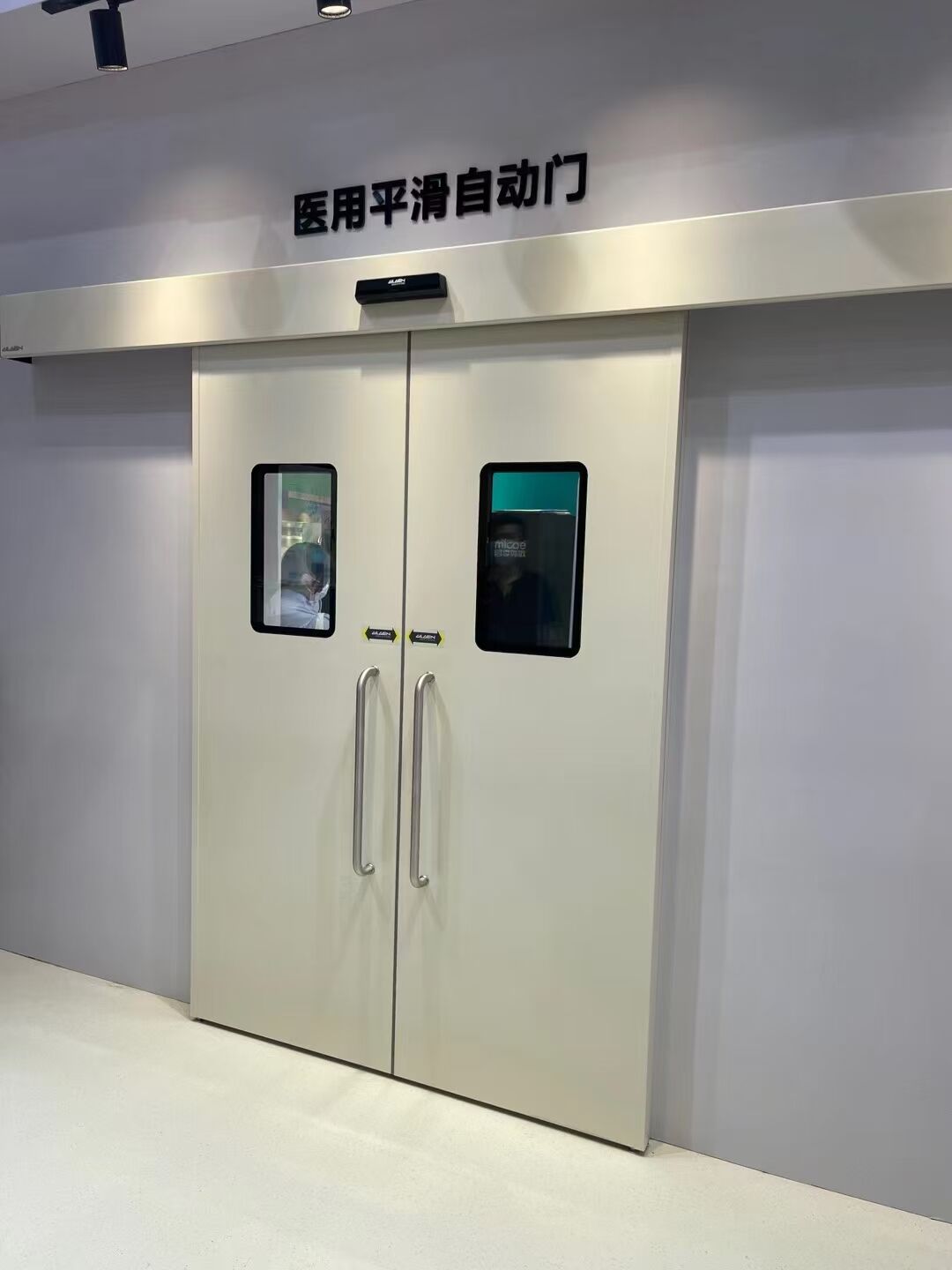Improving Workplace Security using Safety Doors
Introduction: Difficulty in Ensuring Workplace Safety
Ensuring workers' safety is a matter of great concern for company employers. It is even more so in high-risk industries where hazardous materials, heavy machinery, and sensitive operations are carried out. Protective doors are the backbone of the secure working environment that can save energy and life apart from protecting from injury. They not only ensure the physical safety of the workers, but also act as the first line of defence in a fight against the environment, that includes, but is not limited to, dangerous places, hazardous substances, and a controlled atmosphere. This article will go through the way that protective doors are involved in creating safe and secure workplaces, and it will introduce the reader to the essential issues of employees' security in different industrial sectors.
Importance of Protective Doors in Workplace Safety
Because of the principle of the physical barrier effect, protective doors are pivotal elements in the safety of work premises. They are not only inflexible but at the same time they can be rebuilt so that their impact on the security of the place being covered is very minimal. The doors need to be thoroughly tested to see whether they can resist the effects of a potential fire and thereby, they made them fire-resistant and able to resist harmful substances and mechanical forces. These days not every technological development has proven to be safe to the environment, and especially in the working spaces. As a result of this unsafe environment, the protective doors are designed with maximum safety features, for example the self-closing mechanism as well as the sound and visual alerts triggered through the status sensors to instantly evacuate everyone from the area.
Asserting their prominence at the workplace, safety doors can assist in a number of ways including the following:
- Prohibiting Unauthorized Access In facilities where dangerous equipment or covert operations are present, only employees can be allowed access to such locations. The door locks, which are integrated into central systems, are utilizing biometric scanning, keycard access, and smart lock to ensure that the right person is entering the exact location. That way, theft or accidents in the workplace are reduced and there is an added sense of security to the employees who are using such facilities.
- Preventing the Spread of Hazards Hazardous incidents, such as chemical plant, laboratory or production facility, are the grounds where the danger of accidents is high. Thus, protective doors act as a barrier against the spread of hazardous materials, toxic fumes, or chemicals. In other words, fire-resistant doors can keep the consequences of a fire within a zone, and also the collaborated smoke restricted to that part of the facility, thereby giving staff enough time to evacuate in a safe manner.
- Impact Resistance in High-Risk Areas It is the case for the majority of highly risky workplaces which are associated with heavy machinery, various sorts of vehicles, or physical impact sources. If it is safety-sensitive places, doors that are built from steel or composite materials would be the answer. Only impact-resistant doors in a plant or a warehouse can make sure workers are safe from accidents that are caused by machinery, vehicles, or other sources of force.
Types of Protective Doors for Workplace Safety
A set of protective doors with each having a different specification is designed for every workplace environment in order to keep out distinct risks and dangers. We shall discuss those that are the most popular:
- Ul Listed Fire Door Fire-rated protective doors are vital in the context of fire safety in the workplace. These doors are configured to deny the destructive features of a fire and smoke from the atmosphere, and this helps to provide a secure and quick evacuation for the employees, as well as saving the equipment and goods from damage. Fire-rated doors are used in places with fire hazards such as factories, hospitals, and commercial buildings. These doors are designated by a fire rating, and as such, some of them are capable of bearing high temperatures for a period of time which, in the case of three-hour doors, means up to twelve-thousand degrees Fahrenheit for 3 hours maximum.
- Explosion-Proof Protective Doors The safety of employees in such sectors as oil and gas, mining, and chemical manufacturing heavily depends on blast-proof doors. These doors are explicitly designed to stop the explosion from spreading and thus not to interfere with the pressure or shock waves affecting other sections of the entire production area. Usually, these doors are made of thick steel material and are supplied with reinforced frames that can work under blast conditions.
- Soundproof Protective Doors In the environment where employees work with noise that is high enough to damage hearing or to distract employees, soundproof doors are indispensable. These doors have the best sound-deadening materials for insulation which not only keep unwanted external noise outside but also stop the workspace from making loud sounds. Soundproof doors are typically incorporated with offices, conference rooms, and recording studios, and employees find it easy to concentrate and be productive in these silent places.
- Impact-Resistant Protective Doors It is of utmost concern in crowded workplaces that impact-resistant doors provide real and practical safety. These doors are made of special materials that are able to bear the brunt of physical forces caused by machines, forklifts, or accidents. Impact-resistant doors are frequently seen in manufacturing plants, warehouses, and storage facilities to avoid casualties and property damages. These doors are built from materials that are sustainable such as steel or reinforced composites, and are as well made in a way that they take the energy of the impact and as such, reduce the chances of injuries occurring.
Benefits of Protective Doors in the Workplace
- Employee Safety is Boosted The main advantage of protective doors in the workplace is increased employee safety. By using such tools to create a kind of physical enclosure to delineate the hazardous and danger zones, the doors thus act as a physical barrier between the working staff and the harmful materials thereby protecting them from accidents and injuries. The doors made for fire resistance can prevent fires, whereas the doors that are resistant to explosions can guard workers against the detrimental effects of the blast. Noise-cancelling doors are beneficial in terms of the environment because they can slow down or even stop the noise that constantly takes place and cause hearing damage. Therefore, employees can work in a more comfortable workplace hearing clearly.
- Compliance with Safety Regulations There are quite a number of industries that are required to strictly follow the given safety regulations which among other things insist on the installation of protective doors for the safety and health of the workforce. OSHA (Occupational Safety and Health Administration) is an example of the bodies that make sure that industries, like the chemical processing and manufacturing, have fire-resistant doors at the workplace in order to protect the employees. Protective doors installation, therefore, is the best way that companies adhere to the regulations and avoid penalties or legal cases.
- Increased Productivity In addition to safety, protective doors are also a major contributor to an increase in the productivity of industries. Soundproof doors save workers from noise and consequently set up a quiet environment whereby employees are able to focus on their duties and produce good results. Moreover, impact-resistant doors are able to mitigate risks of property damage caused by equipment and materials, thus ensuring the enhanced and disruption-free operation of the production lines.
- Long-Term Cost Savings Businesses become economically sound by investing in protective doors and derive economic benefit in the long run. Fire-resistant doors are an excellent example to demonstrate the point; they not only prevent fire damage to the company's equipment but also help in lowering the repair costs and the time lost. Impact-resistant doors are another example that are capable of saving the company's money as they protect the property from damage, the occurrence of which would have been a signal for expensive repairs. Moreover, the companies reduce accidents and injuries so that they can avoid the compensation claims, high insurance premiums, and the resulting loss of productivity at the workplace.
Protective Doors in High-Risk Industries
Companies involved in high-risk industries are strongly recommended to use protective doors since the threats posed by accidents in these sectors are very big. Let's look at some of these industries and examine the protective door types that are used to improve the safety situation.
- Chemical Manufacturing Protective doors are a major part of containing hazardous materials in chemical manufacturing facilities and also in fire containment. The use of fire-rated doors, explosion-proof doors, and impact-resistant doors in these industries are the most common practices to guard the workers against the extremely dangerous chemical fires and explosions. The ability to confine deadly substances within a particular area helps prevent the risk of widespread contamination and secures workers against exposure to toxic chemicals.
- Mining For the mining industry, protective doors also serve as a compound of the safety of miners who are potentially in peril of underground fires, gases, and the occurrence of explosions, thus protecting them from these disasters. The doors have the ability to be strengthened and being fireproof, gas-proof and, besides many others, they can also be highly equipped for high-pressure areas protecting workers under hazardous conditions. Explosion-proof doors and fire-resistant doors are especially important in mining facilities where fire and explosions are common
- Healthcare Facilities Apart from being essential in maintaining sterile and clean environments, protective doors play a very important role in keeping the health of both patients and medical staff against contamination at bay. The use of soundproof doors, particularly in sensitive areas like operating theaters or patient recovery wards, is the way to create a calm and controlled environment. In addition, the so-called fire-rated doors guarantee the safety of the medical facilities in case of a fire, while the impact-resistant doors provide the necessary protection to critical areas such as the emergency rooms and intensive care units.
Conclusion: The Future of Protective Doors in Workplace Safety
The protective door feature is the best tool to protect the workplace safety of both employers and employees. Protective doors are even more important for such purposes with materials, technology, and intelligent features improving the quality of the doors. Companies can now easily choose fire-resistant and impact-resistant doors to soundproof and even get explosion-proof ones, and this has clearly given way for better protection for employees and assets.
The manual and mechanized components will still be the basis of a further type of the security barriers that the manufacturers would like to produce. Manufacturers will continue to offer these doors, equipped with sustainable materials, safe locking systems, and also safety features that are enviro-friendly through their own innovations. Since workplace safety is such a big deal, the new doors that the industries will use are the ones that will ensure that these industries remain safe and also prevent breaches in the laws of safety regulations.

